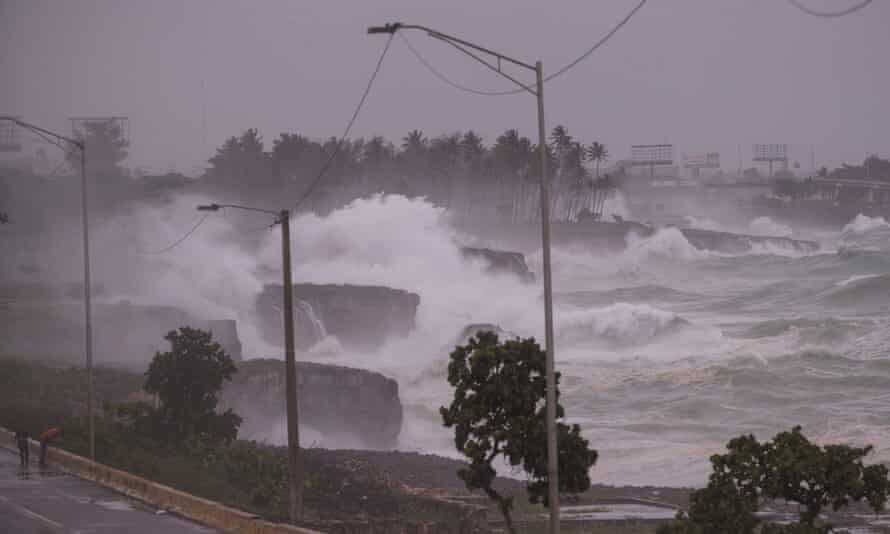
The government on Sunday opened shelters and moved to protect sugarcane and cocoa crops ahead of the storm, whose next target was Florida, where governor Ron DeSantis declared a state of emergency in 15 counties, including in Miami-Dade County where the high-rise condominium building collapsed last week.
Elsa was located about 175 miles east-southeast of Montego Bay, Jamaica, and was speeding west-northwest at 17 mph. It had maximum sustained winds of 65 mph, according to the National Hurricane Center in Miami.
The storm killed one person in St Lucia, according to the Caribbean Disaster Emergency Management Agency. Meanwhile, a 15-year-old boy and a 75-year-old woman died Saturday in separate events in the Dominican Republic after walls collapsed on them, according to a statement from the Emergency Operations Center.
Elsa was a Category 1 hurricane up until Saturday morning, causing widespread damage in several eastern Caribbean islands on Friday, as the first hurricane of the Atlantic season.
Among the hardest hit was Barbados, where more than 1,100 people reported damaged houses, including 62 homes that completely collapsed as the government promised to find and fund temporary housing to avoid clustering people in shelters amid the pandemic.
The long-term forecast track showed it heading toward Florida as a tropical storm by Tuesday, but some models would carry it into the Gulf of Mexico or up the Atlantic coast.
A tropical storm warning was in effect for Jamaica and from the Haitian capital of Port-au-Prince to the southern border with the Dominican Republic.
A hurricane watch was issued for the Cuban provinces of Camaguey, Granma, Guantanamo, Holguin, Las Tunas, and Santiago de Cuba. Some of those provinces have reported a high number of Covid-19 infections, raising concerns that the storm could force large groups of people to seek shelter together.
"Anticipating is the key word," said Cuba's president, Miguel Diaz-Canel, adding that vaccination efforts would continue. "Let's take care of lives and property."
In Haiti, authorities used social media to alert people about the storm and urged them to evacuate if they lived near water or mountain flanks.
"The whole country is threatened," the Civil Protection Agency (CPA) said in a statement. "Make every effort to escape before it's too late."
In the Dominican Republic, which shares the island of Hispaniola with Haiti, authorities opened more than 2,400 shelters as forecasters warned of heavy rains. Officials also ordered evacuations ahead of the storm as people kept stocking up on supplies. Some people worried about the state of their homes, with many living under corrugated roofing.
In St Lucia, the wind damaged a secondary school, pummeling desks, overturning chairs and sending papers flying after blowing off the roof and siding.
Authorities in Puerto Rico rescued eight people, including two children, in stormy conditions after their boat sank amid 8ft to 10ft waves.
Elsa was the first hurricane of the Atlantic season and the earliest fifth-named storm on record. It is forecast to drop 4in to 8in of rain with maximum totals of 15in across portions of southern Hispaniola and Jamaica.
Source: Associated Press



Reader Comments
to our Newsletter